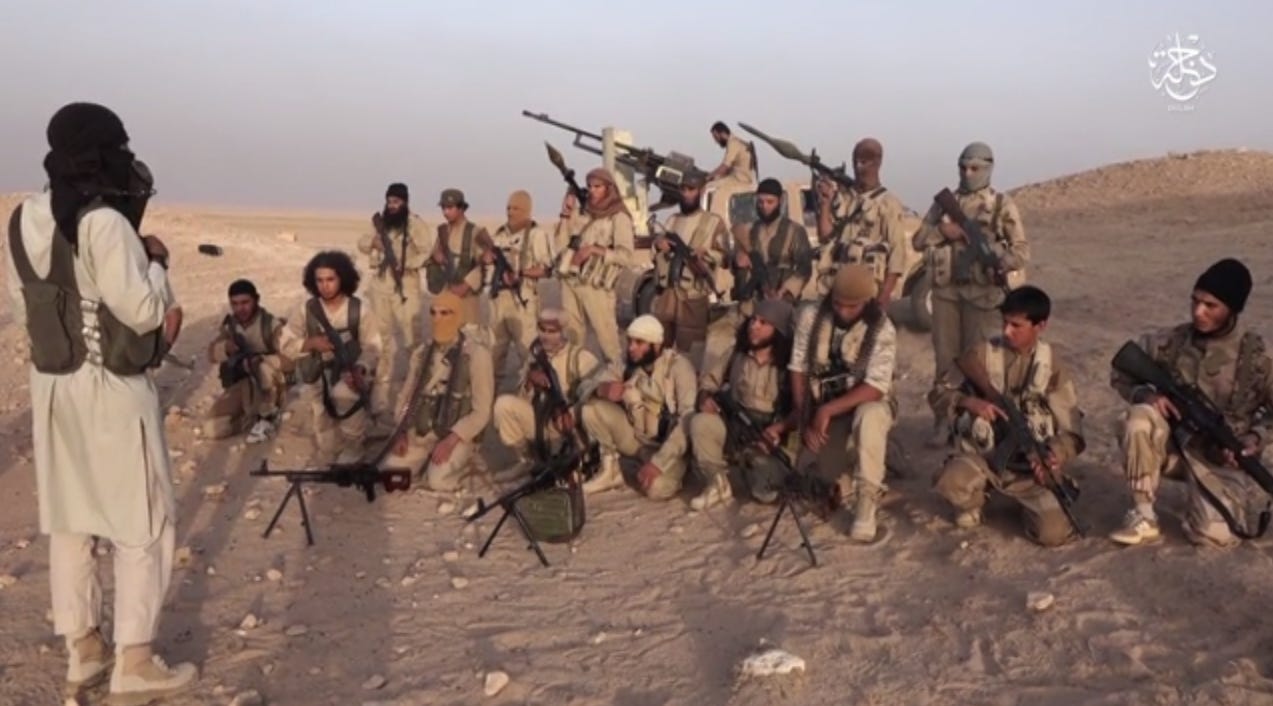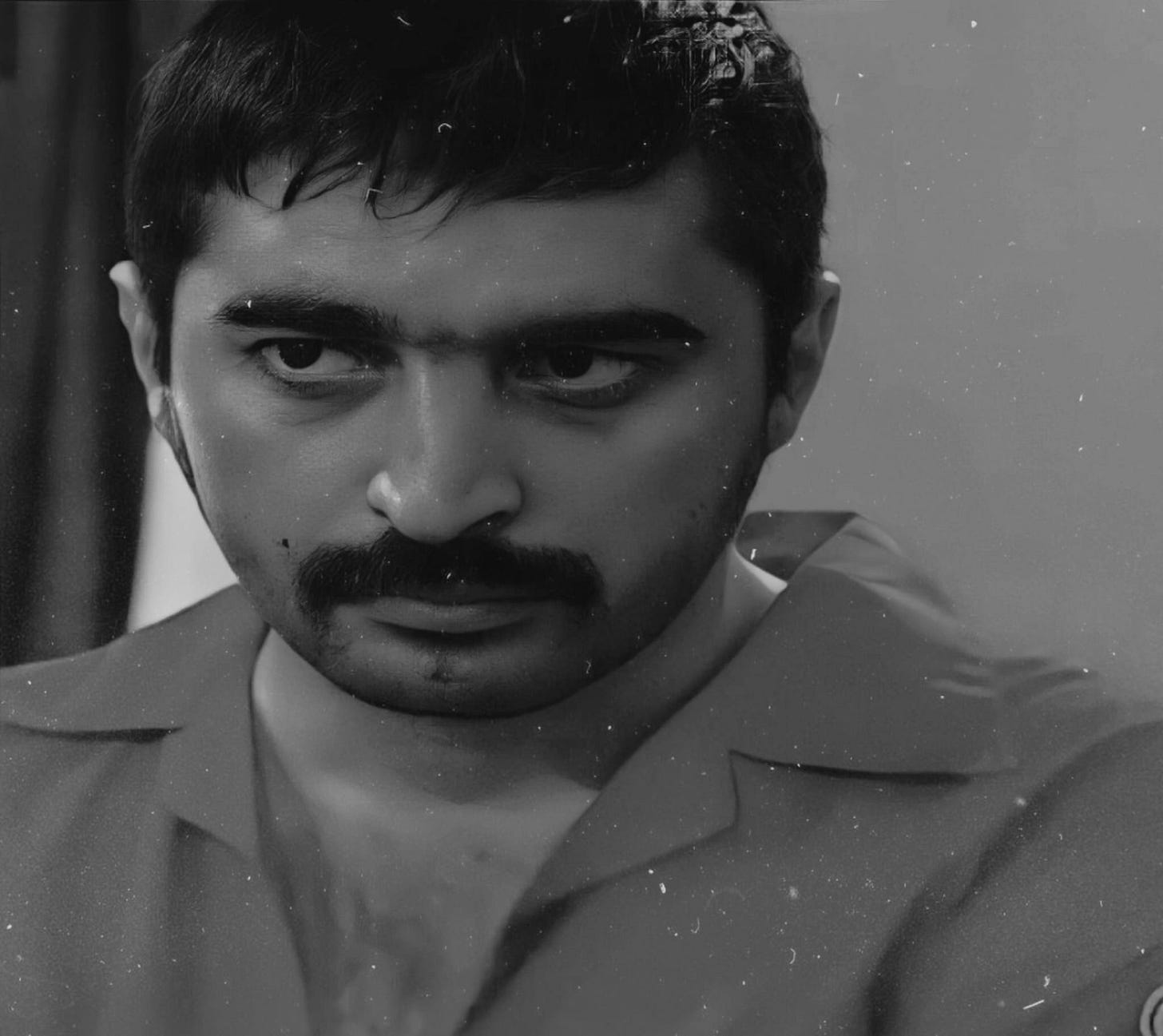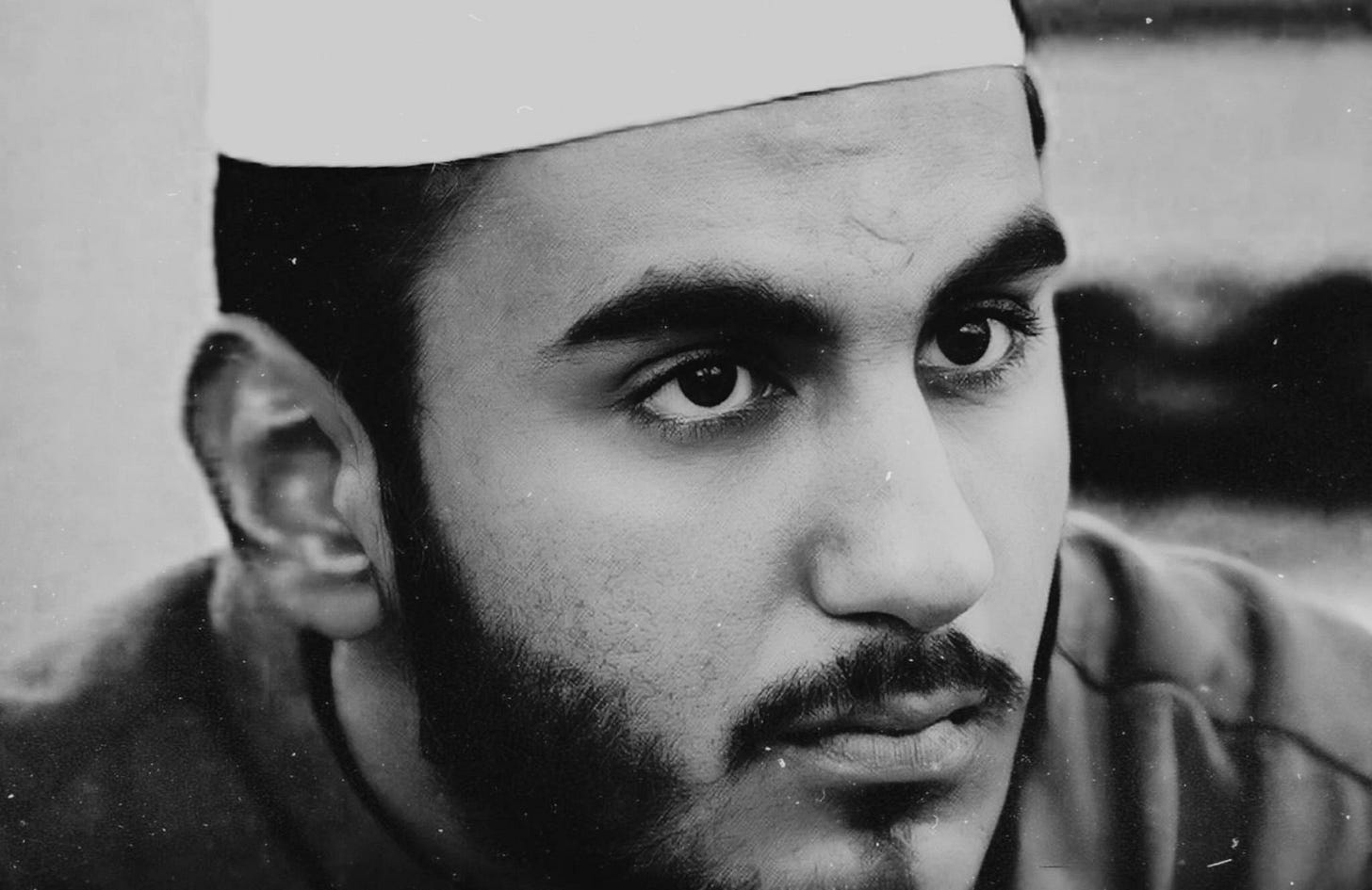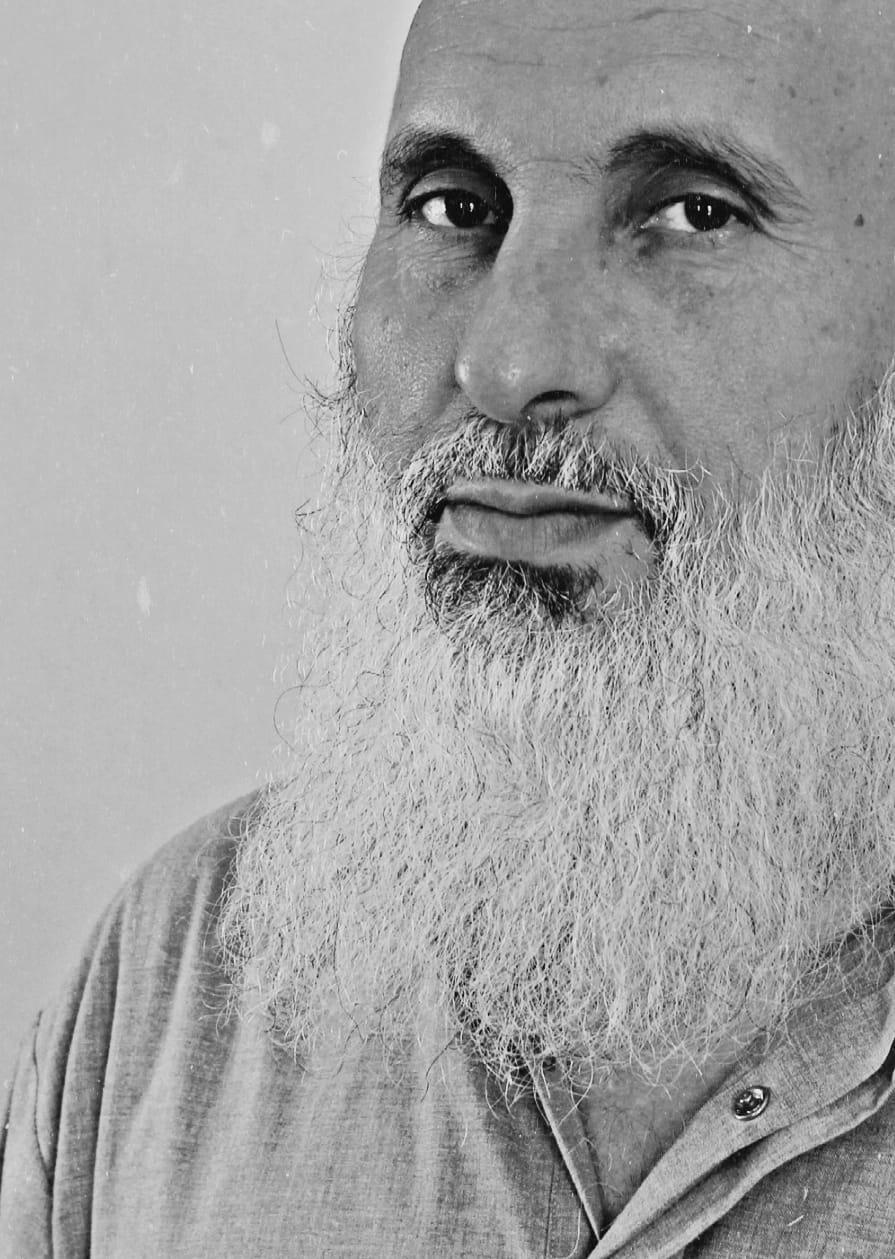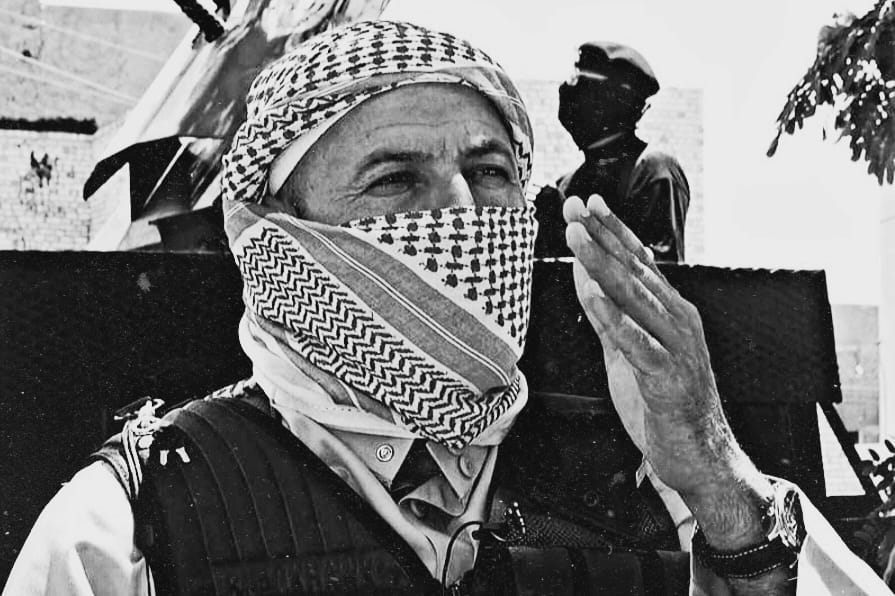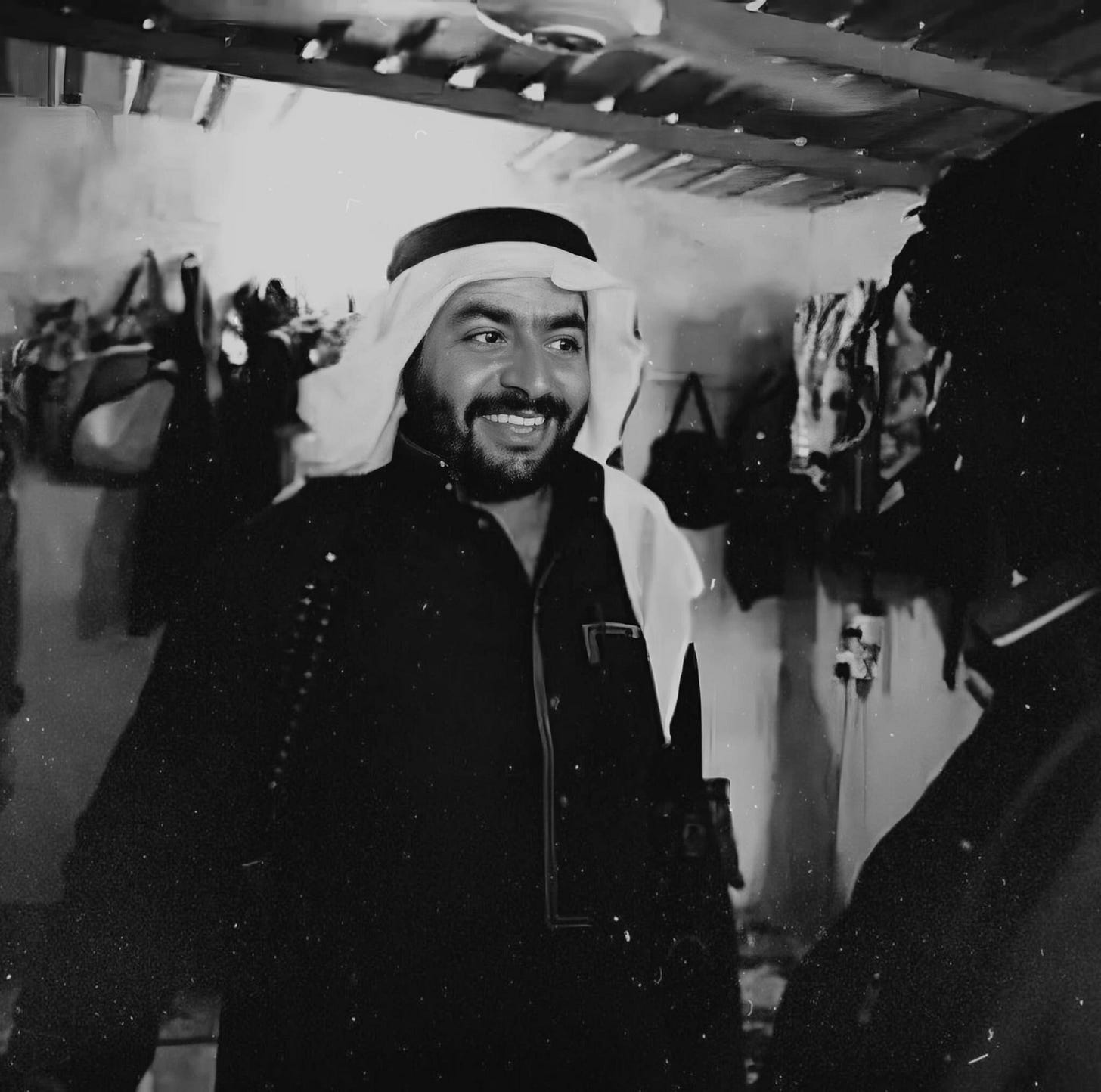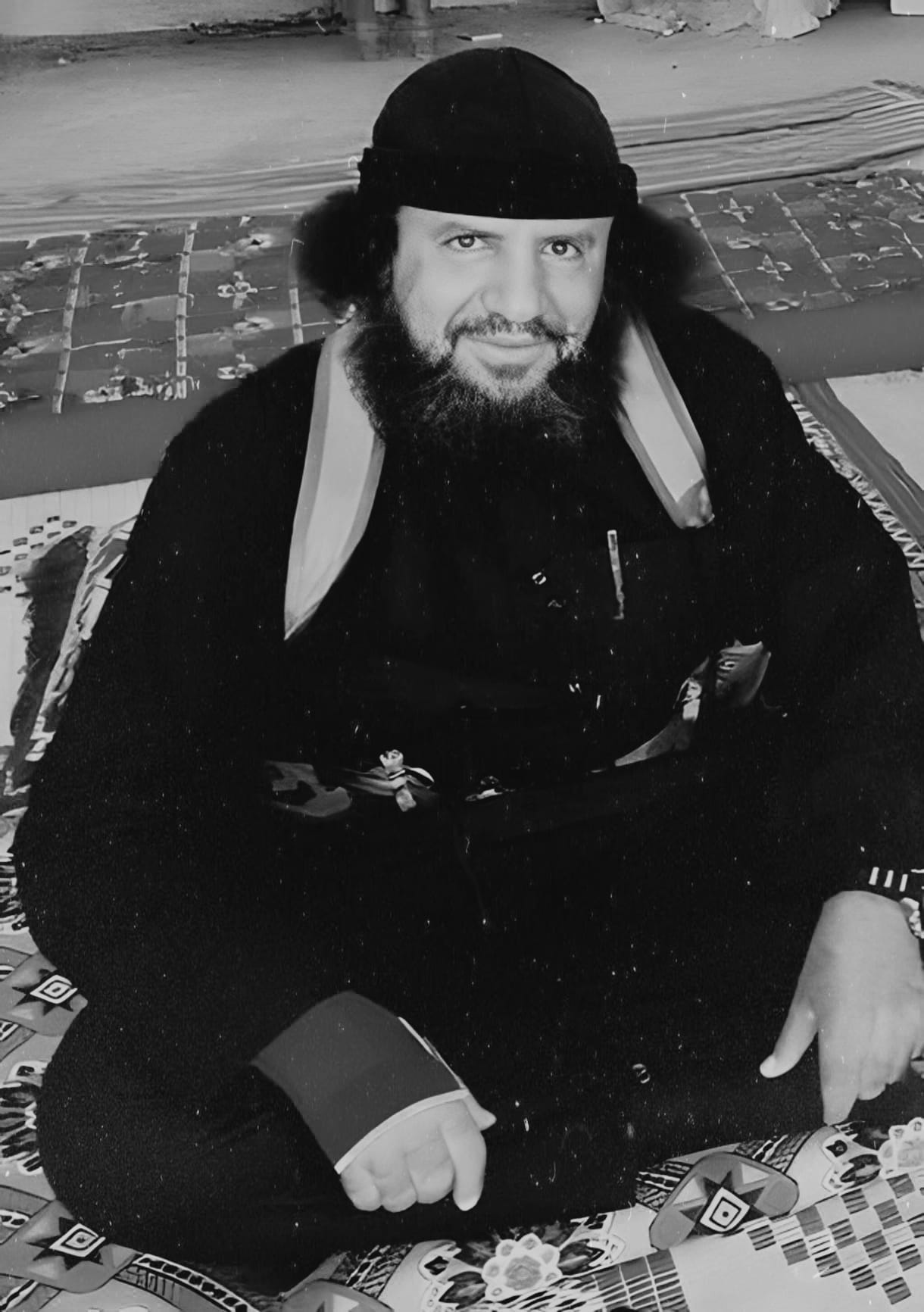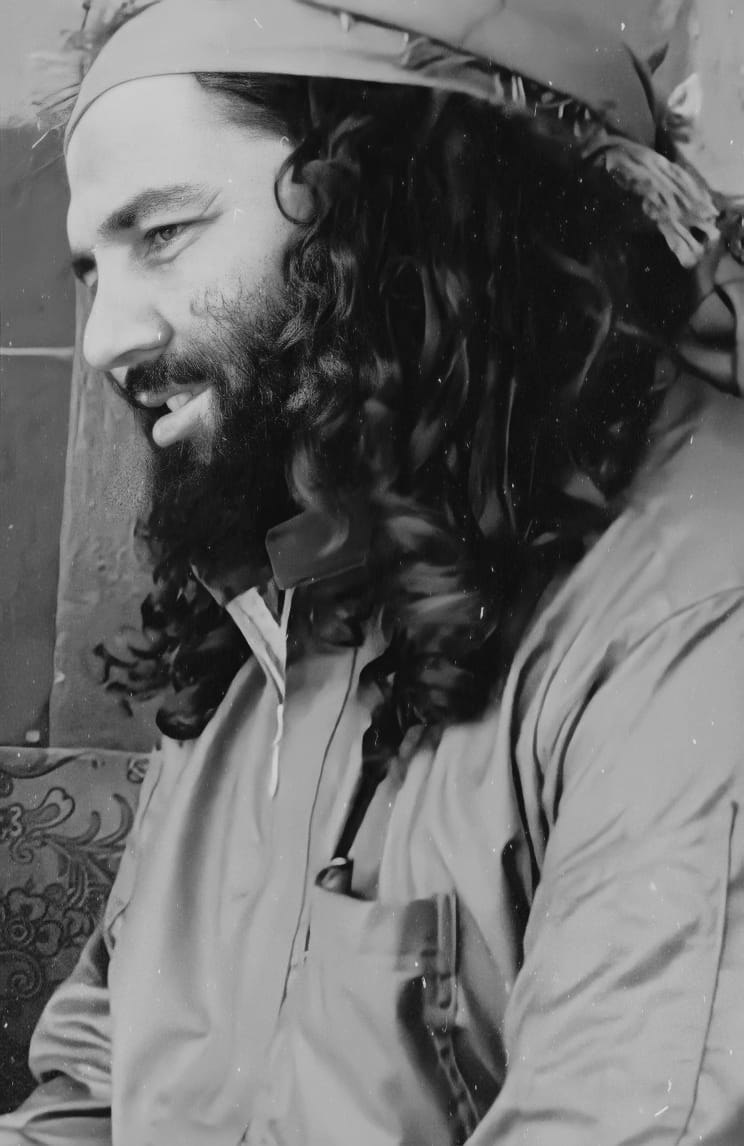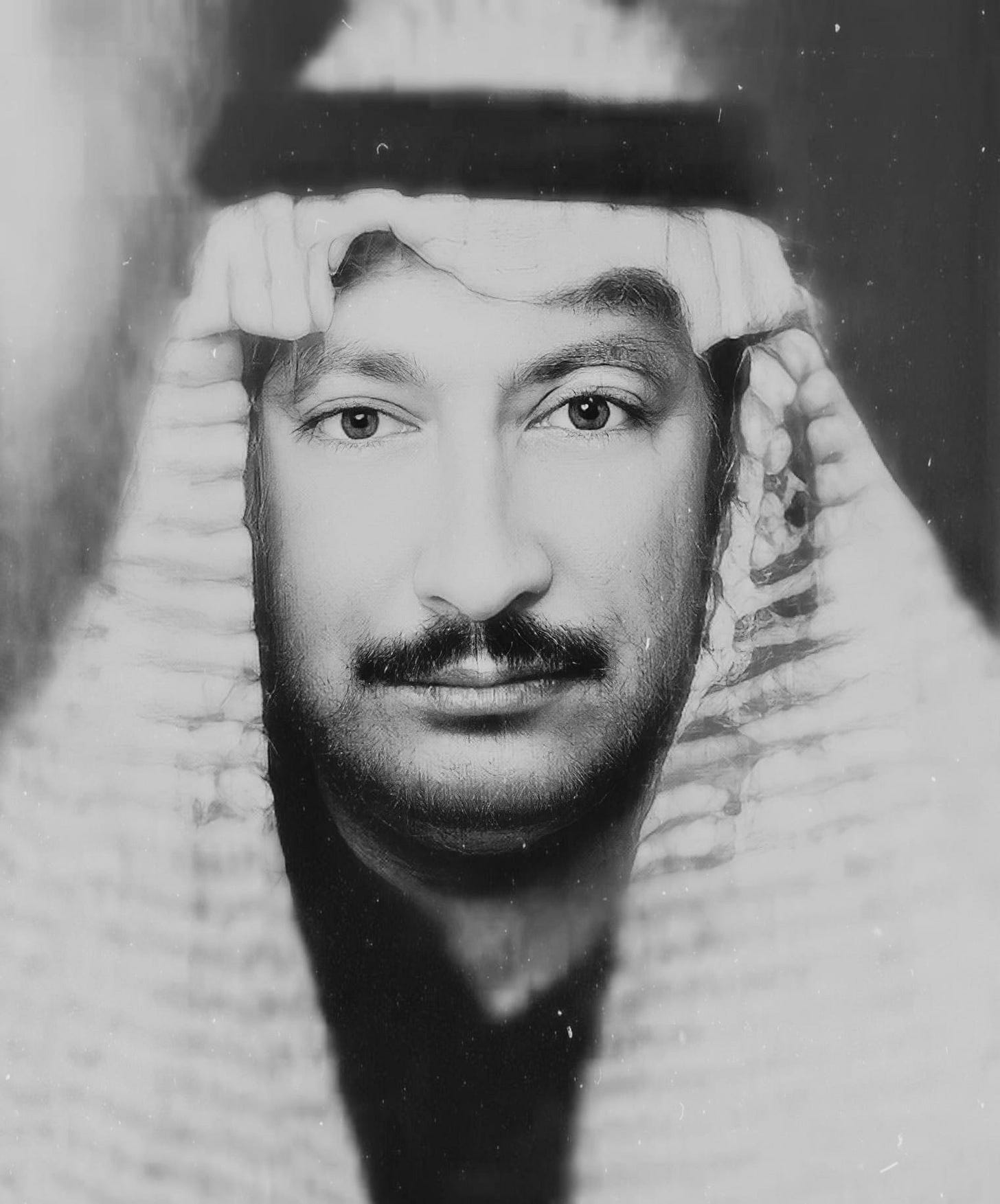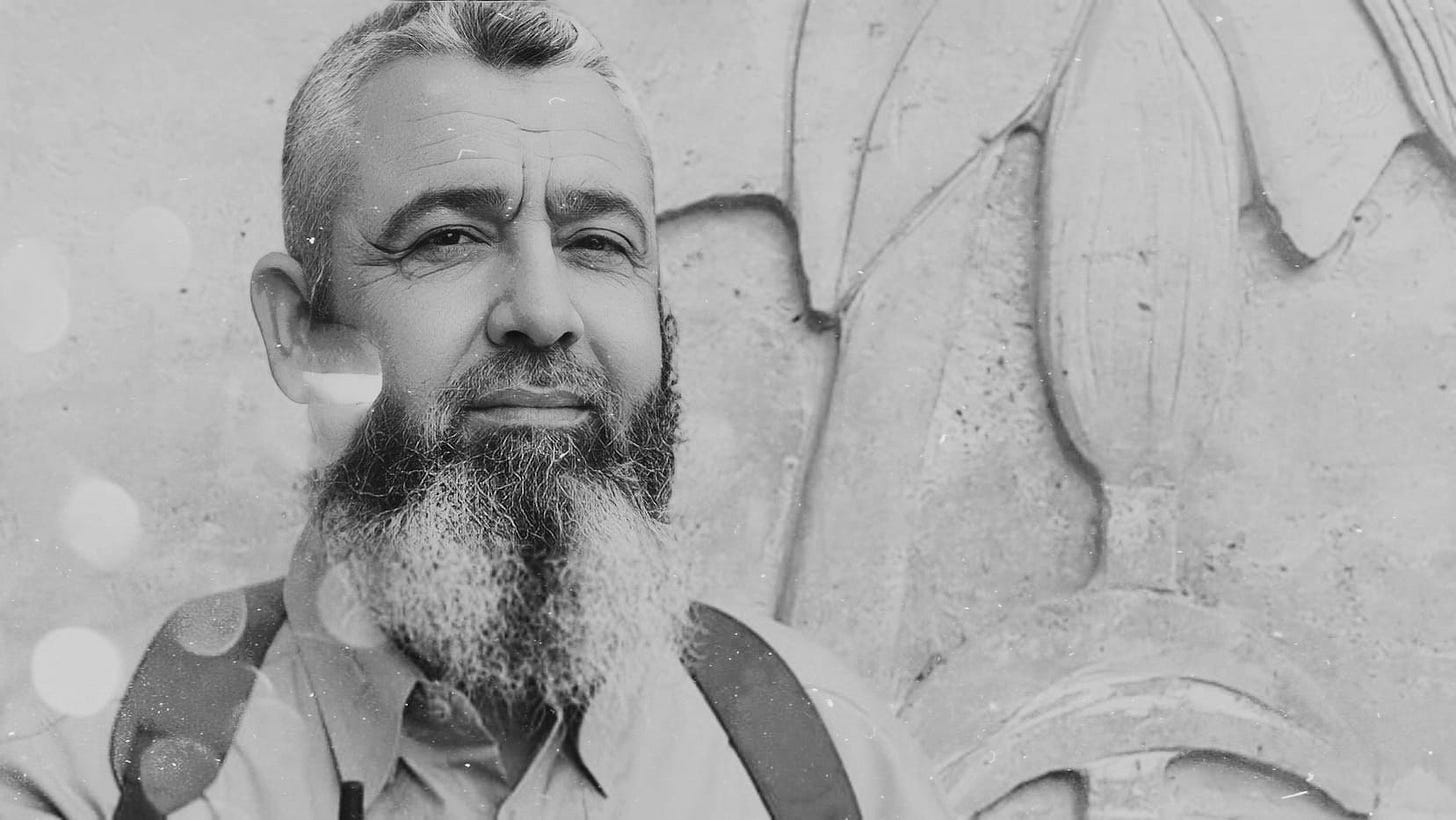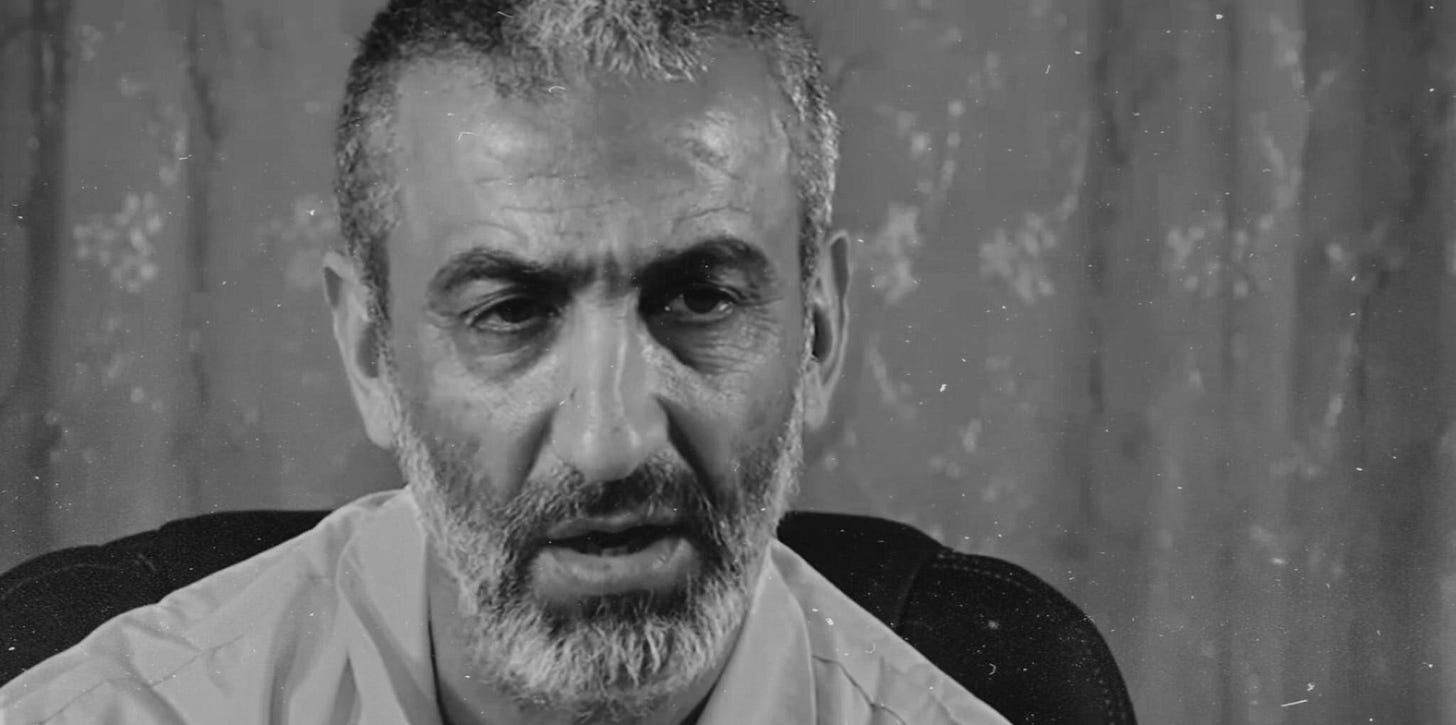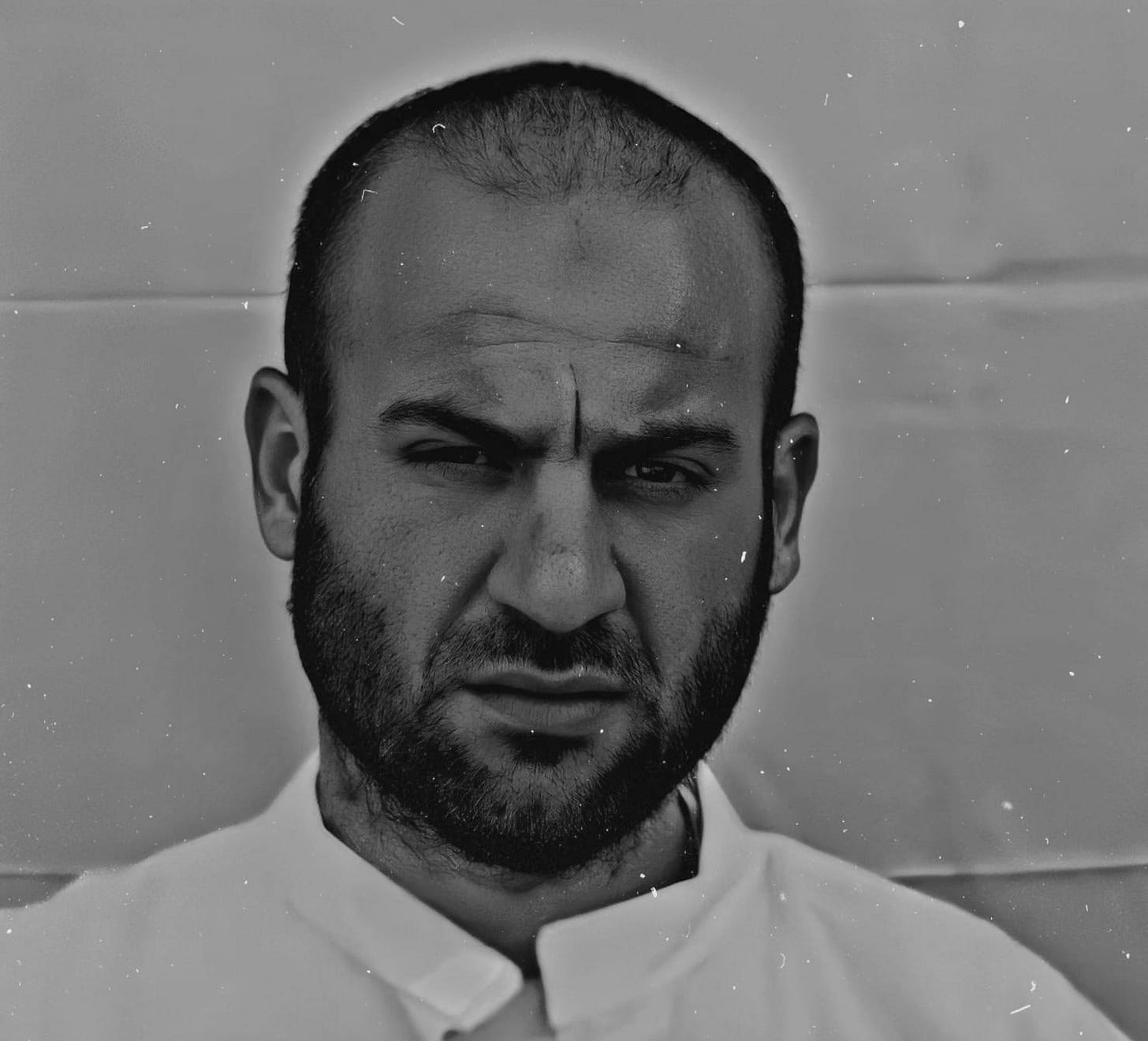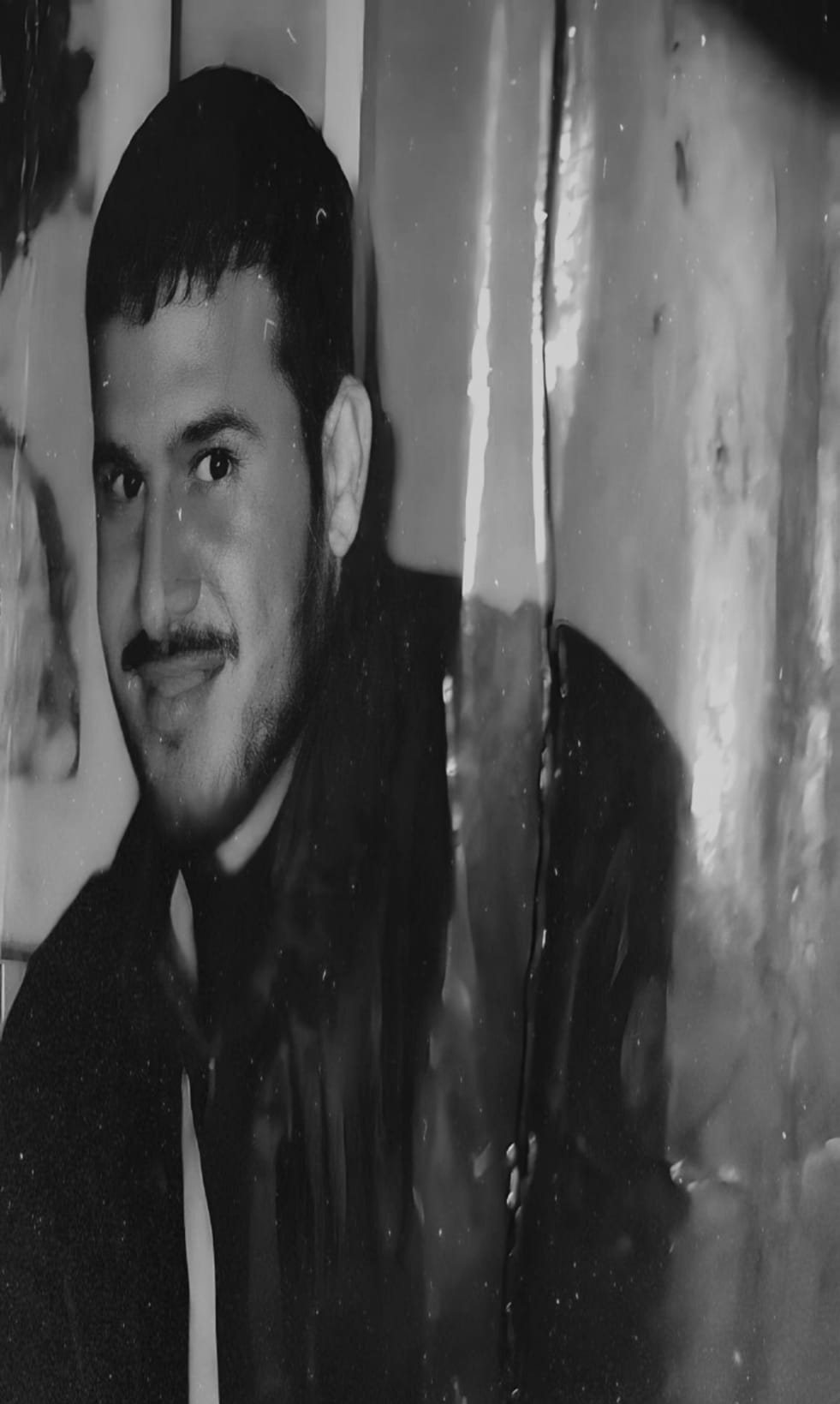The Uses and Meaning of History and Biography for the Islamic State
Shortly after the Islamic State (IS) announced the appointment of its fifth “caliph”, Abu Hafs al-Hashemi al-Qurayshi, in August 2023, a Facebook account devoted to IS messaging appeared and started publishing a series of short biographies of the group’s leading members—some past, some present; some dead, some alive—that doubled as a potted history of the organisation, particularly in the early phase after it moved to Iraq in 2002.1 There are a number of interesting insights into the IS movement contained in this material, a rough translation of which is given below.
The timing of the release makes clear that one purpose of these biographies and the interspersed history and commentary is to counter-act the criticism of Abu Hafs for claiming to be the caliph of all Muslims while remaining anonymous. Many, including Islamists, ask: How can Muslims be loyal to somebody they do not know? As the chronicle records, this is a criticism that goes all the way back to the beginning, to Ahmad al-Khalayleh, the notorious Abu Musab al-Zarqawi, who founded IS in 1999 and only showed his face in April 2006, two months before he was killed. (A small but notable detail: the accounts below always refers to the founder by his real name, which is unusual.) The author contends that these arguments have been dispelled with Islamic “evidence and proofs” many times over, mocking the “stupidity of their proponents”, and accusing them of bad faith since one of the caliphs, Ibrahim al-Badri (Abu Bakr al-Baghdadi), did appear fully in public in July 2014, and these people then found other reasons not to join IS.
Part of the conceit of the biographies is that they are of “hidden figures”, again playing to the idea that serving Islam (as IS sees it) does not require people to be public. In fact, many of the IS jihadists profiled are rather well-known and were during the time they were operating because there were a lot of leaks about IS’s hierarchy after 2014 from defectors and the intelligence services of States fighting IS. But the author has a point that many of the truly consequential figures in IS’s history remained hidden during their lifetimes, and one of the most interesting parts of these accounts is the inclusion of several biographies of IS operatives that—to my knowledge—have never been revealed before.
Another purpose of the material is broader. The accounts are in a category of IS media outputs that date back to its early days.2 The IS movement has long used the biographies of its leaders and soldiers as a source of inspiration and instruction—to provide “guidance by their remembrance”, as the author puts it here. This applies not just in IS’s public propaganda, but in the ideological training (or indoctrination) it administers to the jihadists who join its ranks. As such, the contents of these biographies—for example, the life details selected for emphasis—and the people selected and the order they appear in provides some indications about how IS and its supporters think: the models to be aspired to in terms of Islamic learning, conduct towards other Muslims, the bravery and savagery that should be visited on unbelievers, and so on.
There are a couple of biographies notable by their absence. For example, the spokesman from 2011 to 2016, Taha Falaha (Abu Muhammad al-Adnani), who ultimately became the caliph’s deputy and governor of Syria, and the media emir from 2009 to 2016, Wael al-Ta’i (Abu Muhammad al-Furqan), who also coordinated the “provinces” as IS expanded beyond the Fertile Crescent after 2014, took charge of the foreign terrorism campaign in 2015, and became by the end “general caretaker” of the caliphate. It might be that these men were not omitted and their absence is simply an artefact of me not gathering the posts as systematically as I should have done before Facebook removed the account. Perhaps in Falaha’s case, by the very nature of his position in IS, he was too public for a list of “hidden” exemplars, albeit his real identity was hidden for twelve years, only being revealed by a U.S. sanctions notice in August 2014. This explanation would not work for the ultra-mysterious Al-Ta’i, however, whose real name is only known because IS chose to tell us five years after his death.
What might explain these omissions, assuming they are omissions, is that Falaha and Al-Ta’i were not so important as players in assembling, integrating, and managing the IS movement during its first phase in Iraq (c. 2002-04), nor—since they were media officials—in the planning and execution of IS’s military conquests in 2014, which are the dimensions the author most intensely focuses on. In the early 2000s, Falaha was a new recruit and Al-Ta’i, though a jihadist since the 1990s, was still a young man who spent the immediate years after the Ba’thi regime came down working as a subordinate to the other man whose absence is glaring: Abd al-Rahman al-Qaduli (Abu Ali al-Anbari). Paradoxically, if this is the reason Falaha and Al-Ta’i are missing, it could also explain Al-Qaduli being left out, despite him being a central character in both the forging of IS inside Iraq and the creation of the caliphate. The motif of having Al-Qaduli appear as a key actor in so many of the biographies that are given arguably underlines his importance more effectively than giving him a standalone biography.
Al-Qaduli shows up repeatedly by name in the biographies as the man in whose orbit IS operatives started moving when they came to jihadism in Saddam Husayn’s Iraq in the 1990s, and he is present uncited in a couple of others who are documented to have joined the jihadist network in Iraqi Kurdistan that had Al-Qaduli as one of its leading members, a cadre that formed Ansar al-Islam as an Al-Qaeda-affiliated group and formed a mini Islamic State in northern Iraq in 2001. In at least one instance, Al-Qaduli personally convinced a member of Saddam’s Republican Guards to defect to the jihad. A number of the biographies are of what IS has previously called “repentant officers”: soldiers and others from Saddam’s security apparatus who abandoned Ba’thism and went over to the jihadists years before the end. The biographies also document the geography of the Iraqi jihadist movement during the Saddam days, with particular concentrations around Fallujah and Khalidiya Island, and Mosul and Tal Afar—infamous hotspots after the Anglo-American invasion, with IS being so entrenched in Mosul that the city was never fully cleared even at the height of the Surge and Awakening in 2008. This all adds to the evidence of just how developed the internal dynamics were in Iraq by the turn of the millennium for the emergence of something like the Islamic State even if there had never been an invasion.
Whether or not Saddam’s turn to Islam reflected a personal “born-again” experience is irrelevant. As reflected in these biographies, the Islamization of the State and society had a profound effect. Saddam nurtured his own religious current, and alongside it an independent Salafi Trend was strengthened. Many Salafists were reconciled to Saddam’s Islamist regime, but many were not, and as the regime broke down under the weight of its own failures and the sanctions, its ability to repress the burgeoning underground jihadi-Salafist movement was waning. It was not solely an issue of capacity, however. With jihadism spread so far it was making inroads into the State, especially the security forces, an alarmed Iraqi intelligence chief told Saddam in late 2000 he had to set aside his “alliance with the religious trend” or the jihadists would overwhelm the regime. Saddam ignored him. Zarqawi arrived in Iraq to find the stage already set: a jihadist apparatus just waiting for its moment, some trained military officers in the jihadists’ ranks and many more converted in their own minds, held in their posts only by the terror of a regime that was on borrowed time, plus cross-border structures set up to evade the sanctions that could be repurposed to feed a jihad, and ready recruits in a Sunni population deep into a religious revival, familiar with Salafi concepts, and embittered with sectarianism.
Translation starts here. The pictures were included in the original biographies.
The Six Shaykhs of Iraq
They are the elite [nukhba] of the shaykhs and the people of authority [ahl al-amr], whom all groups in the regions over which they had command followed. They became the nucleus of a movement to destroy the greatest ghoul known to mankind in this era and the idol of the age, America, turning it into a laughingstock to the point that even the cubs of the Sunnah [i.e., Sunni children] stood attacked it with stones, and it fled, humbled, before the might of the men of God and the soldiers of Muhammad (peace be upon him), the descendants of Khalid [ibn al-Walid], Al-Qa’qa [ibn Amr], and Al-Miqdad [ibn al-Aswad al-Kindi]. Through them, the State reached the east and west of the earth, and the light of monotheism shone for those who had neglected it. They are the link between the generations of the people of tradition [ahl al-athar] from the pious predecessors [al-salaf al-salih], who were killed without witnessing the implementation of God’s law on earth, and those who enjoyed its blessings. They illuminated their knowledge with the light of their deeds, established groups, and led them until the fulfilment of the neglected duty [al-farida al-ghaiba]. They were the following:
Imam Umar Hadid al-Dulaymi al-Qahtani: The Lion of Fallujah, the Shaykh of Iraq, and the leader of the two battles [in Fallujah in 2004].
Haji Muharib al-Jaburi al-Qahtani: The Shaykh of Baghdad and Salahuddin, and the founder of the Alliance of the Scented Ones [Hilf al-Mutayibeen].
Imam Abu Ahmad al-Hilali al-Adnani: The link between the groups in Iraq and Khorasan [Afghanistan-Pakistan], and the representative of the tribes and the students of knowledge [talabat al-ilm].
Imam Abu Azzam al-Hilali al-Adnani: The counterpart [lit. “twin”] of Umar Hadid, the military leader of Fallujah, and the emir of Baghdad.
Imam Abu Talha al-Hamdani al-Adnani: The emir of Mosul, its Shaykh, and the wali [governor] of the north.
Imam Awwad al-Zuba’i al-Qahtani: The emir of Zub’a [west of Baghdad and east of Fallujah, just south of Abu Ghraib], the igniter of its flame, and the wali of Iraq.
They began mobilising, recruiting, and engaging in jihad in the early 1990s, during the period when the taghut [Saddam Husayn] was preoccupied after his war against Persia, from which he was forced to withdraw, and the occupation of Kuwait, from which he gave up under duress. The mountains of Kurdistan and northern Mosul ignited, Zub’a flared up, and Fallujah was brought under [jihadist] control. However, the taghut moved swiftly, and deployed his security forces and army within a week, leading to clashes that ended with their withdrawal and the death of most of their brothers. The mujahideen in Kurdistan were forced to retreat to the mountaintops, to learn from the experience and benefit from their mistakes until the next opportunity arose. The call [da’wa] then returned to secrecy since most of its [the jihadist movement’s] leaders were being pursued.
When there was turmoil between the Allied forces and the Ba’thist taghut, and taking advantage of the general amnesty, they [the jihadists] regrouped their men, welcomed the muhajireen [lit. “emigrants”; foreign jihadists], and stopped sending them [the Iraqi jihadists] to Khorasan in order to benefit from them in the war they were preparing for. When they sensed the impending American invasion of Iraq, they quieted down and adjusted their plans as they assessed what was happening and what was going to happen. America invaded Iraq with its characteristic arrogance, overthrowing the oppressive regime [nizam al-baghi] that it had raised [or nurtured] and supported before bringing it down. This marked the beginning of the flames of war between the people of Islam and those of the Cross, Al-Majus [ref. Zoroastrians, i.e., the Iranians], and their lackeys [or agents, lit. “tails”, al-adhnab].
[Poetry] They entered Iraq with their arrogance and came / because of their pride, to a defeat they never foresaw / They dismissed a loyal protégé and arrogantly asserted themselves / Boastfully claiming they had taken control / Little did they know that warriors for their war / Were eager, prepared, and lying in wait!
Thus, most of the six prominent shaykhs and some of the ansar [lit. “supporters” or “partisans”; local jihadists] gathered with the leaders of the muhajireen to form what was known as the Twelve Shaykhs. They were:
From the Ansar:
Imam Umar bin Hadid al-Dulaymi [kunya: Abu Khattab al-Falluji].
Imam Abdullah bin Najm al-Hilali [a.k.a. Abu Azzam al-Iraqi, real name: Abdallah Najm Abdallah Muhammad al-Juwari].
Shaykh Haji Thamir al-Dulaymi [full name: Thamir Mubarak Atrous al-Rishawi].
Shaykh Haji Awwad al-Zuba’i.
Shaykh Muhammad al-Issawi [kunya: Abu al-Hareth].
From the Muhajireen:
Shaykh Ahmad al-Khalayleh [real name: Abu Musab al-Zarqawi].
Shaykh Abdul Munim al-Badawi [kunya: Abu Hamza al-Muhajir].
Shaykh Abu Anas al-Shami [real name: Umar Yusef Jum’a].
Shaykh Abu al-Nasser al-Libi.
Shaykh Abu Muhammad al-Lubnani [real name: Mustafa Ramadan Darwish].
Shaykh Abu al-Ghadiya al-Shami [real name: Sulayman Khalid Darwish3]
Additionally, there was the host and master of the house, the jewel of the ansar: Haji Anbar al-Qaisi, may the mercies of my Lord continuously be upon him and his brothers.4
They had a meeting to start the war, where they crafted a plan to determine the course, and outline the nature, of the conflict. As a result of that meeting, the shaykhs of the ansar took on the responsibility to contact their remaining brothers in Baghdad, Salahuddin, Mosul, and Kurdistan to begin the great epic battle that has spanned nearly twenty years. To this day, the allies of the Most Merciful continue to make the allies of Satan taste all kinds of torment, types of subjugation, and manifestations of tribulation, jihad, strength, and combat.
O God, we bear witness that they sacrificed their most precious and valuable possessions for Your sake and in Your cause. Through their efforts, Your rule was re-established on Your earth after its absence, people recognised the truth after losing it, slaves [i.e., Muslims] were guided, lands were conquered under their leadership,5 the market of jihad flourished once more, and people returned to Your law. So envelop them and have mercy on them.
O Lord, have mercy on our shaykhs, forgive our emirs, and accept our leaders and soldiers: Haji Khattab al-Ameri, Haji Hilal al-Ameri, Haji Iraq al-Ameri, and Haji Khattab al-Faysal.
Repetition of the Repeated!
Since the beginning of jihad in Iraq, with the emergence of [other insurgent] groups and their entry into the arena, fools have recycled the same doubts—devoid of any shari’a evidence—that revolve in the orbit of jahiliyya [pre-Islamic ignorance], delusion [al-wahm], and lack of tamkeen [lit. “empowerment”; the holding of territory]. They scorn the deaths of leaders and the [jihadists’] withdrawal from cities. Despite responses replete with evidence and proofs exposing the naivety of these accusations and the stupidity of their proponents, the sceptics remain trapped in the same cycle and place!
Our Shaykh Abu Umar al-Zawi—may Allah have mercy on him—led the Islamic State of Iraq for four years without being publicly known.6 During that time, he was an obedient shaykh and a brave master according to most theorists, including those who abstained from jihad. They spoke of his leadership only with praise and admiration. Then came his successor, Ibn Awwad [i.e., Ibrahim al-Badri (Abu Bakr al-Baghdadi)]—may Allah have mercy on him—and nothing changed until the fitna [strife] occurred, and the ranks were splintered.7 At that point, ignorant accusations began emerging from those falsely associated with jihad. Some of them even challenged him [Abu Bakr] to appear, saying they would pledge allegiance [bay’a] to him if he did. Yet, when the Shaykh revealed his voice, image, and full lineage, they retreated, and searched, alongside their apostate brothers, for other doubts! These same accusations have been repackaged and launched since the time of Al-Khalayleh [Zarqawi], who did appear shortly before his death, through Abu Umar, Abu Bakr, Abu Ibrahim [al-Hashemi al-Qurayshi], Abu Hassan [al-Hashemi al-Qurayshi], and Abu Husayn [al-Husayni al-Qurayshi]—and they continue repeating them about Abu Hafs [al-Hashemi al-Qurayshi]! May Allah have mercy on them [these previous leaders], elevate their abode in Paradise, and grant steadfastness and victory to those still living among them.
[Poetry] Concealment is no flaw / For a person of noble aims / Just as Laylat al-Qadr [the Night of Power] is concealed / And it is the best of nights.
Indeed, and all praise is due to Allah, as our shaykhs have mentioned, our succession is not hindered by the death of a leader or affected by the loss of an imam. Rather, they are the ones who illuminate our path, pave the way for victory [or conquest: fath/fatah], and the absent are guidance by their remembrance. As for claims that the caliphs did not live up to the gap left by the salaf, such assertions are nothing but slander, fabrication, and lies, fully known by the speakers to be so. The conquests in Africa, the expansion of the group to new lands and cities, and the arrival of new pledges of allegiance from the East are conclusive arguments against the followers of RAND and the agents [or collaborators or spies: umala] of the Coalition.
This could only be denied by a member of the Funeral Committee of Syria [Hay’at Tashyi al-Sham: a play on the name of Hay’at Tahrir al-Sham (HTS)]! It is astonishing that a member of the Hay’at [Committee] speaks about jihad with such shamelessness, audacity, and insolence. As if they did not hear words of his [i.e., Ahmad al-Shara’s (Abu Muhammad al-Jolani’s)] shaykh, Al-Harari [Maysar al-Jaburi (Abu Mariya al-Qahtani], of unknown ancestry [or lineage], who said, “The Hay’at is not a jihadist movement!”
[Poetry] For every ailment, there is a remedy that can be sought / Except for foolishness, which no doctor can cure!
We bring glad tidings to those waiting: at its [the Islamic State’s] head are soldiers of the first generation, the architects of conquests, the commanders of the [training] camps, the shaykhs of the Islamic State of Iraq, and the ministers of Ibn Awwad [Abu Bakr]. Thus, the claim that its [IS’s] old leaders are being eliminated is a lie and distortion relies on sources quoting their masters [i.e., the U.S.-led international Coalition]. It [IS] remains [baqiya]; it is steadfast, despite those who fought it, allied against it, betrayed it, and sold it out. It remains not because it holds territory, but because of the endurance of its methodology and creed. It will remain on your necks, God willing, make you forget your escape in the battles of Khayr [Deir Ezzor] and Raqqa. Shaykh Abu Hafs—may God protect him—is a leader of vengeance and bearer of blood. You will witness his actions with your own eyes and hear the bullets of his weapon before his words. So wait, followers of Al-Jolani, for the vengeance of Al-Furqan [probably a reference to Wael al-Ta’i (Abu Muhammad al-Furqan)], Ibn Awwad, and Al-Hawashim [the Hashemites].
Indeed, tomorrow is near at hand for those who await it. So await the bloody dawn.
Hidden Figures of Iraq #11: The Engineer and Wali (Governor), Manaf al-Rawi
One of the first mujahideen to join Jamaat al-Tawhid wal-Jihad. He studied under the two sheikhs, Abu Muhammad al-Lubnani and Abu Ayyub al-Masri [who is better known as better known as Abu Hamza al-Muhajir (real name: Abdul Munim al-Badawi)]. He joined the Rawa camp shortly after the American invasion and participated in preparing it. He entered Fallujah to take part in the Battle of the Confederates [Marakat al-Ahzab] alongside Al-Khalayleh. He later undertook a security mission, during which he was captured and put in Bucca prison for several years.
While in prison, he dedicated himself to teaching and led several debates against the murji’a [those who postpone judgment of sinners, refuse to use takfir (excommunication) against other Muslims]. He eliminated some leaders of the Sahwat and the anti-Islamic Party [i.e., the Muslim Brotherhood’s Iraqi Islamic Party (IIP)]. Upon his release, he was appointed to oversee some sectors and later entrusted with governing Al-Rasheed area of Baghdad.
During his tenure, his leadership inflicted the most severe blows on the Crusaders and Rafida [derog. Shi’is], targeting their strongest ministries and breaching their most fortified locations. He was eventually arrested by chance, and the rabble of the Crusaders boasted of his capture. He was sentenced to death after a sham trial.
He was executed in Baghdad in Jumada al-Awwal 1434 AH [March-April 2013], shortly before the breaking of the walls [campaign concluded in July 2013 with the prison-break at Taji and Abu Ghraib].
[Notes: The original understanding of Manaf al-Rawi was that he had become a turncoat in prison before his execution. However, Al-Rawi appears too often and in terms too complimentary—his presence here is another example—for that story to be true.]
Hidden Figures of Iraq #12: The Shaykh, the Hadith Scholar, the Athari: Hudayfa al-Batawi
Dr. Abu Husayn al-Juhayshi al-Zubaydi, a hafiz [one who has memorised the Qur’an], was born in Baghdad and studied there. He earned a medical doctorate from the University of Baghdad and studied under Shaykh Faiz al-Athari, Shaykh Hamid al-Salafi, along with two shaykhs, Abu Shahd al-Mashadani and Abu Muhammad al-Furqan, who were among the founders the Group of Monotheism and Salafism [Jamaat al-Tawhid al-Salafiyya] and those who called to the oneness of Allah, Most High.
After the killing of most of his brothers and shaykhs, he was summoned to join the Ba’th Party, so he went into hiding for several years. He joined the Ansar group [i.e., Ansar al-Islam] and later pledged allegiance to Al-Qaeda along with a faction of the Ansar. Moving to Baghdad, he became known for his ingenuity in planning and operations, coupled with his knowledge [ilmuhu] and eloquence [or clarity: bayan]. He was imprisoned for a period in Bucca prison.
Upon his release, he was assigned to the security sector of the Rusafa district [of Baghdad] and later appointed its overall emir. He temporarily managed the security portfolio of the Minister of War [Abu Hamza] al-Muhajir, before being appointed as the shar’i and deputy to the wali of Baghdad, Shaykh Manaf al-Rawi. Together, they turned Baghdad into a city of blood and explosions, targeting the Ministries of Justice and Defence and the Central Bank.
After Shaykh Manaf [was arrested], he [Hudayfa] became Baghdad’s wali and took it upon himself to avenge Manaf and the two shaykhs [Abu Umar and Abu Hamza]. He expelled Baghdad’s Christians in retaliation for the [complicated episode in Egypt in 2010 involving the] sisters Camilia Shehata and Wafa Constantine, killing and injuring hundreds of them in a series of bombings, including attacks on the [Roman Catholic Our Lady of] Salvation Church, the gold market, and media channels.
He was captured along with two shaykhs, Abu Ahmad and Abu Khawla, and a group of elite scholars of Baghdad in a tragic incident. The head of the so-called Sunni Endowment, along with Iraqi priests and some faction [i.e., Awakening] leaders, were sent to debate with them [in Karrada prison], hoping to bring them back [i.e., away from jihadism]. But God foiled their plot and humiliated them with knowledge. Their most learned scholar and Hadith expert, Shaykh Abu Ragheef, was close to accepting Islam at his [Hudayfa’s] hands during the debate, [and would have done] had he not fled from the shaykh.
The Shaykh and his brothers were sentenced to death and placed in a high-security counter-terrorism prison. Inside the prison, he crafted explosive belts and weapons were smuggled into the facility to him. He was taken to the prison chief by one of the officers, overpowered him, killed him, and freed his brothers. He then went to confront the disbeliever himself and killed the head of the counterterrorism unit, Brigadier General Muayyad Talih.8
The Shaykh contacted the [IS] leadership, informing them of their imminent martyrdom and his refusal to surrender [or be captured]. A fierce battle ensued in which dozens of elite American forces and their collaborators from the counterterrorism unit were killed. After exhausting their ammunition, the Shaykh detonated his explosive belt, followed by his companions, who also detonated their belts among the disbelievers. They all ascended together [into heaven] in Jumada al-Akhirah of the year 1432 AH [May 2011].
Hidden Figures of Iraq #13: Haji Adnan al-Bilawi
Shaykh Abu Abdulrahman al-Dulaymi was born on Khalidiya Island and studied there. He graduated from the Military College as an officer with the rank of Major in the Special [Republican] Guard.9 He repented at the hands of some scholars shortly before the [U.S.-led] occupation [of Iraq] and renounced the Ba’th.
He joined Al-Khalayleh at the beginning of the jihad and participated in the two battles of Fallujah under the leadership of Abu Azzam [al-Hilali al-Adnani] and Ibn al-Hadid [i.e., Umar Hadid]. After the battles concluded, he relocated to Al-Khalidiya, where he was appointed as the security leader of Anbar by the Mujahideen Shura Council [Al-Majlis Shura al-Mujahideen].
After being imprisoned, he dedicated himself to learning, completing the memorisation of the Qur’an with the ten canonical recitations and obtained numerous certifications. He also studied Al-Sihah [al-Sitta, the authentic Hadith collections] and Tafsir [Qur’anic exegesis]. Upon release, he moved between various provinces [wilayas] and was later sent to Syria at the height of the fitna [i.e., in late 2013], where he assumed the role of General Supervisor of the provinces.
He succeeded Al-Nasser Lideen Allah [a.k.a. Abu Ibrahim al-Zaydi, Abu Ibrahim al-Ansari, Abu Sulayman al-Nasser (real name: Numan al-Zaydi)] as emir of the War Ministry [after February 2011]. Returning to Iraq, he led attacks on Abu Ghraib, Taji, and Tasfirat prisons, and played a key role in planning the conquest of Iraq [in 2014], including orchestrating the attacks on Mosul and Badush.
He was killed with one of his brothers in Mosul during a clash following an ambush in Shaban 1435 AH [June-July 2014].
Hidden Figures of Iraq #14: Haji Bakr al-Khlifawi
[Became rather famous under the name Haji Bakr. Real name: Samir al-Khlifawi.]
Shaykh Abu Bakr al-Dulaymi was born and raised on Khalidiya Island. He graduated from the Military Academy and served as a Colonel in the Air Defence Forces. He repented at the hands of some scholars shortly before the occupation and renounced the Ba’th.
He fought in Al-Khalidiya and participated as a commander in the Second Battle of Fallujah [in November-December 2004], where his military expertise was highly beneficial. After the battle, he was captured and detained in Bucca Prison. During his imprisonment, he devoted himself to acquiring knowledge under the guidance of prominent scholars.
Upon his release, Shaykh Abu Ayyub [a.k.a. Abu Hamza al-Muhajir] appointed him to oversee the military development file. He became a member of the General Staff, eventually rising to become its emir [or Chief of Staff]. He was subsequently assigned to lead the Military Council of the Islamic State and later sent to Syria as a supervisor of the war and a representative of the Emir al-Mu’mineen [Commander of the Faithful, i.e., the caliph Abu Bakr al-Baghdadi].
He planted detachments [al-mafariz] and laid out plans for the expansion of the State, deserving the credit after God for numerous victories. He led several battles against the Nusayriyya [Alawi, i.e., Bashar al-Asad’s regime] forces and revolutionary factions following their betrayal.
He was killed in the Aleppo countryside during a clash with the Sahwat al-Sham [Syrian Awakening, i.e., Syrian rebels] in Rabi al-Awwal 1435 AH [January 2014].
Hidden Figures of Iraq #15: Haji Dawud al-Suwaydawi
[Better known by the kunyas Abu Muhannad al-Suwaydawi or Haji Dawud. Real name: Adnan al-Suwaydawi.]
Shaykh Abu Muhannad al-Dulaymi was born and studied in Khalidiya Island. He graduated from the Military Academy and served as a Colonel in the Army. He repented at the hands of some scholars shortly before the occupation and renounced the Ba’th.
He studied under Abu Anas al-Shami and Abu Muhammad al-Lubnani when they arrived in Ramadi. He participated in the First Battle of Fallujah [in April 2004], and was appointed as a commander of one of the Eastern Front brigades during the Second Battle [of Fallujah in November-December 2004]. After retreating, he was captured and detained in Bucca Prison. He took advantage of this time to memorise [the Qur’an], seek knowledge, and obtain certifications in religious sciences.
Upon his release, he was appointed as the General Military Commander of Anbar Province and then became its wali, succeeding Abu Ibrahim al-Zaydi. He led military operations alongside Abu Nabil al-Zubaydi [a.k.a. Abu Nabil al-Anbari, Abu al-Mughira al-Qahtani (real name: Wissam al-Zubaydi)], igniting widespread confrontations. He was delegated to the Syrian theatre during the initial expansion at the request of the Military Council and served as a member of both the Shura and Military Councils.
He returned to [Iraq to] oversee Anbar and served as a deputy to [Adnan] al-Bilawi [a childhood friend of his], supervising operations in Iraq and preparing for further expansion. At his hands, God conquered one area after another in Anbar. He played pivotal roles in planning and commanding operations in Naimiya [near Fallujah], Khalidiya Island, North Baghdad, Tharthar Arm, Thunder Bridge [Jisr al-Ra’ud near Khalidiya Island], and other zones. During his tenure, the entirety of Fallujah, Heet, Kubaysa, Rutba, and the cities of western Anbar, as well as areas north and south of Baghdad, were captured.
He was tasked with overseeing Iraq’s affairs alongside Shaykh Abu al-Mutaz al-Hasani [real name: Fadel al-Hiyali]. He prepared for the “Great Baghdad Raid” [Ghazwat Baghdad al-Kubra], designed the strategy for conquering Iraq, and personally supervised its execution.
He was killed in a Crusader airstrike along with Shaykh Abu Zahra al-Muhammadi in western Anbar in the early days of Safar 1436 AH [November 2014].
Hidden Figures of Iraq #16: Haji Wissam al-Halbusi
[Better known as Abu Nabil al-Anbari and Abu al-Mughira al-Qahtani. Real name: Wissam al-Zubaydi.]
Shaykh Abu Nabil al-Zubaydi was born in Fallujah, where he studied under some of its shaykhs and was raised in a family of scholarly Salafism [al-salafiyya al-ilmiya]. He participated in the First Battle of Fallujah as an emir of several groups. Afterward, he travelled to the island for work and returned after the Second Battle.
He began reorganizing security operations with Abu al-Abbas al-Shammari but was captured and imprisoned in Abu Ghraib Prison during this time. He was released after a while, and Shaykh Abdullah Azzam appointed him as the security commander of the Fallujah sector.10 During this period, he was injured and later reassigned as emir of Abu Ghraib.
He was captured again in Baghdad and transferred between the prisons of the Fifth Division, Fallujah, and Al-Khalidiya until God favoured him and granted his release. He resumed his work in Fallujah, where he was appointed deputy emir and later general emir of the city. By God’s grace, working alongside Haji Dawud, he picked the heads [i.e., assassinated] numerous Awakening leaders and traitors.
He was captured for a third time, along with several emirs of the Fallujah sectors, and his position and role were uncovered, leading to his imprisonment in the Counter-Terrorism facility. He was later transferred to Taji Prison and while there assumed leadership of one of its sections. He was subsequently moved to Abu Ghraib Prison, where he planned an escape and took full command of the prison. He managed to break through the internal security barriers with his companions and led the prisoners' liberation [in July 2013].
Once on the outside, [Adnan] al-Bilawi tasked him with overseeing Salahuddin Province. By God’s grace, he led the conquest of the citadel of shirk [idolatry, polytheism] in Samarra, followed by Tikrit, Baiji, Al-Alam, Yathrib, and the greater part of Salahuddin Province. He captured thousands of Rafida during the [genocidal] Speicher attack [in June 2014] and sought to negotiate over the prisoners. When the Rafida refused, and some of the prisoners insulted Umm al-Mu’mineen [the Mother of the Believers, i.e., Aisha], his rage flared, and he executed them all.
The imam later tasked him with overseeing operations in Libya, prompting him to secretly migrate there by land and sea. Upon arrival, he established the foundations and principles of the wilaya, and achieved significant conquest, including of major cities like Sirte and Derna. He sought revenge for Imam [Usama] Bin Laden and the cases of Camilia and Wafa by executing Coptic Christians associated with Egypt’s church.
Despite suffering multiple injuries and his body being covers with scars, God granted him victory and success in many battles. He was killed in the city of Derna in a Crusader airstrike in Safar 1438 AH [November 2016].
Hidden Figures of Iraq #17: Haji Hamid al-Muhammadi
Shaykh Abu Umar al-Shihawi al-Dulaymi was born and studied in Fallujah. He studied under numerous scholars, including Shaykh Subhi al-Samarrai and Shaykh Hamid al-Salafi. He migrated to Khorasan during the Soviet-Afghan war [in the 1980s], where he met prominent jihadist leaders.
He returned to Iraq following the fall of the Ba’th regime after nearly a decade of fighting. He established several security cells in Baghdad before moving to Khalidiya Island, where he met Abu Musab [al-Zarqawi] and pledged allegiance [bay’a] to him. Shaykh Abu Musab appointed him as the leader of the island and before that he had been in charge of the northern front of Fallujah.
He was captured during a raid after being injured and detained in Bucca Prison, where he stayed for several years. During his imprisonment, he dedicated himself to learning, teaching, and transferring knowledge to others. He also met with senior leaders [of IS] during this period.
After his release, he was assigned to be military commander for one of the southern sectors and later returned as a military commander in Ramadi alongside his companion, [Adnan] al-Suwaydawi. He was tasked with reigniting operations on Khalidiya Island and, by God’s grace, he succeeded. He then returned as emir of all the sectors in Saqlawiya [to the northwest of Fallujah], where he held his position with pride.
Through him, God granted victories in Al-Jughaifi II, Al-Sakaniya, Al-Azraqiya, the Training Institute, the Japanese Bridge, and areas of Khalidiya Island stretching north to the Sijir area in the south. He was called to the Military Council, the Ministry of War, and to oversee the Iraq province, but he refused to leave his post [in Saqlawiya]. He led the northern front to repel the major Crusader aggression during their major offensive, which failed, by God’s grace.
He sustained injuries in a car accident while returning from preparations on the eve of the second Japanese Bridge raid. He passed away two days after the accident in Shawwal 1436 AH [July-August 2015].
[Notes: Hamid al-Muhammadi (Abu Umar al-Shihawi al-Dulaymi) was—to me, anyway—unknown before reading this profile]
Hidden Figures of Iraq #18: Haji Hamid al-Ani
The emir Abu Ishaq al-Askari was born and studied in the city of Ana [near Heet, in Anbar province]. He studied under Abu Anas al-Shami and Abu Ayyub al-Masri [a.k.a. Abu Hamza al-Muhajir]. He began his jihad in his hometown by supporting his brothers financially from his own wealth until he was captured and spent several years in prison.
He took advantage of his time in prison to study under [Adnan] al-Suwaydawi and [Adnan] al-Bilawi. After his release, he joined [IS in] the Anbar desert and moved [i.e., acted as a messenger] between the camps of Abu Ibrahim al-Zaydi and the two shaykhs [Abu Umar and Abu Hamza]. He was appointed as the military commander of the Sayf al-Bahr camp and led desert ambushes, losing a leg in one of the battles.
He participated in the conquests and led raids on Khalidiya Island, Albu Shajal, and Al-Sijariya. He was then appointed as the general military commander for the Anbar province, where God granted him victories in Albu Assaf, Albu Farrag, Al-Sufiya, and other areas.
He led the Great Baghdad Raid after the death of Haji Dawud, during which he successfully captured the entirety of Ramadi after annihilating ten military divisions stationed there. Later, he was transferred to the Tigris Province [Wilayat al-Dijla], where he was appointed its military commander and fought fiercely to defend the southern front of Mosul in Qayyarah.
He was killed in a Crusader airstrike in Hammam al-Alil, south of Mosul, at the beginning of Muharram 1438 AH [October 2016].
[Notes: Hamid al-Ani is a very obscure IS figure, unknown to me before this. There are reports of an “Abu Ishaq al-Askari” being killed in a Coalition airstrike in Saqlawiya in September 2014, which—assuming it refers to the same man—was false, by the above account. It does not appear there have been any other public mentions of Al-Ani/Abu Ishaq.]
Hidden Figures of Iraq #19: Haji Umar al-Assafi
Shaykh Al-Faqih Abu Khattab al-Dulaymi was born and raised on Khalidiya Island. He studied under a group of prominent scholars, including Shaker al-Badri, Ibrahim al-Alusi, and Al-Saa’iqah before his death. He was a peer of Haji Anbar [al-Qaisi] and Subhi al-Samarrai,11 and a companion of Mullah Krekar [Najmadin Faraj Ahmad] and Al-Shafi’i.
He travelled to India, Egypt, and the Hijaz in pursuit of knowledge, and called the ruling regimes infidels, which led to government persecution of him during the last four decades of the previous century. He helped establish a migration route with some shaykhs from Iraq to Khorasan.
He worked with two shaykhs, Umar Hadid and Shaykh Umar al-Issawi, in a group for promoting the enjoining of good and the forbidding of evil, which resulted in him being pursued. He fled to the Hijaz, but due to a betrayal by murji’a elements, he was given an ultimatum to leave [Saudi Arabia] or face arrest.
He sought refuge with the Ansar group [i.e., Ansar al-Islam] in Kurdistan and attempted to persuade Mullah Krekar to expand operations into [Arab] Iraq, but his efforts were rebuffed. He returned to Ramadi, where he established a training camp, and began gathering and receiving muhajireen [foreign fighters] shortly before the occupation. He also established several security detachments [al-mafariz al-amniyat] in Baghdad in preparation for the war.
He pledged allegiance [bay’a] to Al-Khalayleh’s group and participated in the battles of Fallujah [in 2004], serving as a member of its Shura Council. He was captured during a raid and spent several years in prison.
After his release, he was offered several positions, all of which he declined until Haji Dawud appointed him as his deputy. He participated personally in most of the raids and remained in Ramadi when Haji Dawood was in Fallujah.
Illness eventually overwhelmed him, rendering him unable to work for an extended period, and all treatments failed. He died in his bed due to his illness, three days after the death of Haji Dawud [on 8 November 2014]. He was buried next to him in Safar 1436 AH [November-December 2014].
[Notes: Umar al-Assafi is another figure I had never heard of before this. He should not be confused with Abu Umar al-Assafi, the wali of Shirqat, who was designated a “cross-dressing monster” by The Daily Mail in September 2016 after he was arrested in Shirqat during the build-up to the Coalition operation in Mosul as he fled dressed as a woman.]
Hidden Figures of Iraq # 20: Haji Hamid al-Zawi
Imam Abu Umar al-A’raji al-Qurayshi was born and raised in one of the villages of Haditha. A graduate of the Police Academy, he served as an officer in the Ba’thist security forces. He repented of disbelief [i.e., Ba’thism] after recognising it was shirk, joined the Salafi movement, quickly began seeking knowledge, and became renowned as a preacher in western Anbar, which led to him being persecuted by the Ba’th regime and imprisoned multiple times.
He was forced to go into hiding until the occupation approached, at which point he began preparations with his tribesmen. He founded the Army of the Victorious Sect [Jaysh al-Taifa al-Mansura] and served as its emir, gathering members from his city. He met with two shaykhs, Abu Anas al-Shami and Shaykh Abu Muhammad al-Lubnani, and they pledged to unify their efforts and work together.
He joined the Shura Council [of Jamaat al-Tawhid wal-Jihad, as the IS movement was then-known] after meeting Shaykh Abu Ayyub al-Masri [a.k.a. Abu Hamza al-Muhajir], becoming a founding member. His army was dissolved and merged into Al-Qaeda, where he pledged allegiance [bay’a] to Al-Khalayleh’s group. He was appointed as the general security commander for Baghdad, succeeding Shaykh Abu Azzam, becoming both a member of the [Shura] Council and the Shari’a Committee.
He was briefly captured but released when his identity was not discovered.
He was then [after his release] appointed wali of Diyala, where he led a resurgence of operations, and later became overall commander of all wilayats.
Hilf al-Mutayibeen—consisting of armies, tribes, battalions, and tribal leaders—convened to establish a State. Shaykh Abu Ayyub pledged allegiance to him, followed by the other shaykhs, making him the first emir of the Islamic State of Iraq.
Through him, God granted the conquest of half of Iraq, and support was extended to brothers in other regions, including Syria, Gaza, and Somalia. He stood firm against the trials of the Khawarij fitna,12 tribal councils, and Sahwa militias, personally confronted the accusations from Najd’s Saluli Church [Kanisat Najd al-Saluliyyah, i.e., the Saudi religious establishment.13]
He launched raids one after another and led many blessed campaigns, most notably warnings against disbelief in the [insurgent] armies and elections.
He had tasked his War Minister with arranging a meeting with the leaders of the Army of Truth [Jaysh al-Siddiq] to receive bay’a, but they encountered patrols, leading to clashes. The patrols withdrew, but joint reinforcements arrived from Romans and Majus [i.e., U.S./Coalition and Iranian-penetrated Iraqi security forces]. The battle lasted for hours.
Ultimately, the cowards withdrew and bombarded the location with airstrikes, leading to the martyrdom of the Shaykh on Tharthar Island, alongside Abu Ayyub al-Masri and several companions, in Jumada al-Awwal 1431 AH [May 2010].
Hidden Figures of Iraq #21: Shaykh al-Wali Abu al-Mutaz al-Qurayshi
[Abu Mutaz al-Qurayshi is also known as Abu Muslim al-Turkmani and Haji Mutaz. His real name was Fadel al-Hiyali.]
Haji Saud bin Nasser al-Hiyali al-Hasani was born and raised in Tal Afar. He graduated from the Military Academy and served as a Colonel in the Special [Republican] Guard. He repented at the hands of Shaykh Abu Ala al-Qurayshi [a.k.a. Abu Ali al-Anbari (real name: Abdulrahman al-Qaduli)14], renouncing the Ba’th regime and its rule.
Before the occupation, he began preparations: he established a training camp alongside the Shaykh and pledged allegiance [bay’a] to the Ansar group [i.e., Ansar al-Islam], becoming one of its leaders. When a faction of Ansar pledged allegiance to Al-Qaeda, he joined them and was appointed emir of his hometown, Tal Afar.
He was captured and imprisoned for a long period, during which he focused on seeking and teaching knowledge. Upon his release, he was appointed as a member of the Delegated Committee and briefly served as emir of the northern provinces.
He was sent to Syria with Shaykh Abu Ala, where he established cells and prepared for conquests. He was later appointed as the general military commander of the Blessed Wilaya al-Sham [Province of Syria]. He personally led many raids and, by God’s grace, was instrumental in exposing numerous traitors, groups, and disbelieving factions.
He was appointed as the wali of Iraq shortly before the conquest [in 2014] and led the raid [into Mosul] designed by Shaykh Abu Abdulrahman al-Bilawi. He, along with the imam, broke the walls of Badush Prison, then captured the entirety of Mosul, which was followed by further conquests.
He established the Army of Hardship [Jaysh al-Usra], Jaysh Dabiq, and the Caliphate Army [Jaysh Khilafa], while also developing the War Committee [Hay’at al-Harb]. He, along with Haji Dawud, repelled the Crusader Coalition campaign against Iraq.
He was a member of the Shura Council, the Delegated Committee, and the Military Committee, and as wali of Iraq. [He was killed on 18 August 2015.]
Hidden Figures of Iraq #22: Haji Abd al-Nasser al-Qardash
[It has been reported his real name is Taha Abd al-Raheem Abdallah Bakr al-Ghassani.]
Shaykh Abu Muhammad al-Ghassani was born and raised in Tal Afar. He joined the Ansar group [i.e., Ansar al-Islam] with Shaykh Abu Ala al-Qurayshi and worked as an administrator in his hometown, Tal Afar. He was captured and imprisoned in Abu Ghraib, where he dedicated himself to seeking knowledge under scholars such as Abu Abdullah al-Jaburi [a.k.a. Abd al-Latif al-Jaburi, Muharib Abdullah al-Jaburi] and Abu al-Qassem al-Baghdadi.
After his release, he pledged allegiance [bay’a] to the Islamic State of Iraq. He was appointed as an administrator of Tal Afar and later became its governor. He participated in and supervised several raids, most notably the “Raid of Vengeance for the Kurdish Sister Du’a [Khalil Aswad]” and the expulsion of the Yazidis.15
He was appointed deputy governor for the northern provinces of Kurdistan, Nineveh, and Kirkuk, before becoming their governor. Later, he was put in charge of the Military Manufacturing Committee, where he improved its operations and worked on the production of some chemical weapons.
Next, he was sent to Syria alongside Iraqi shaykhs following the internal strife [in 2013] and the group’s expansion. He was appointed governor of Wilayat Baraka [Hasaka Province], where, by God’s grace, he captured vast numbers of villages and demolished the fortresses of the apostates and [Syrian rebel] factions.
He was subsequently appointed as the deputy head of the Delegated Committee and then became its leader after the death of Shaykh [Abu Muhammad] al-Furqan. He remained steadfast during the trials with the extremists [ghulat] and Jahmiyyah [a.k.a. Al-Hazimiyya or the Hazimis], defeating them in the provinces of Baraka and Khayr [Deir Ezzor].
He stayed in the last stronghold [of the caliphate] in Baghuz and personally negotiated the evacuation of families. He surrendered himself as part of a negotiation, offering himself in exchange for the release of Muslim women from Baghuz in Rajab 1440 AH [March 2019].
He remains a prisoner of the Rafida.
[Notes: IS tends not to acknowledge its jihadists once they are in custody, but IS is also devoted to freeing its captive members. It is interesting to see the latter used to make an exception to the former: Abd al-Nasser’s imprisonment is argued here to make him more noble, as he traded himself for the jihadist women in the Baghuz pocket as the caliphate went down.]
Hidden Figures of Iraq #23: Haji Abdullah Qardash
[Also used the kunyas: Haji Abdullah al-Afri and, when he was caliph from 2019-22, Abu Ibrahim al-Hashemi al-Qurayshi. Real name: Amir Muhammad al-Mawla.]
Shaykh Imam Abu Ibrahim al-Hashemi al-Qurayshi was born and raised in Tal Afar. He graduated from the Shari’a College in the University of Mosul. He was conscripted into mandatory military service but quickly repented after meeting Shaykh Abu Ala al-Qurayshi [real name: Abdulrahman al-Qaduli], under whom he gained Islamic knowledge.
He joined the Jazeera Camp as one of its founders and pledged allegiance [bay’a] to the Ansar group [Ansar al-Islam] alongside the Shaykh, working as a military officer in his hometown, Tal Afar. He later gave bay’a to Tanzim al-Qaeda and was appointed as its deputy emir. He fought in the first battle of Tal Afar, inflicting heavy losses on the Crusaders and Rafida [derog. Shi’a].
He was captured by the Americans and spent a significant period in Bucca Prison, where he devoted his time to teaching. After his release, he was appointed as a shari’a officer for the Mosul sector and later as the judge [qadi] of the entire Nineveh Wilaya [Province]. He was called to the Shari’a Committee and became a close companion of Shaykh Abu Ala.
Following the period of fitna, he was sent to Syria, where he began established cells and institutes. He returned to Iraq shortly before the conquest [in 2014], participating in breaking the walls of Badush Prison and capturing Mosul and later Tal Afar.
He led raids in Sinjar and Zummar, and avenged the Kurdish sister Du’a [Khalil Aswad] by enslaving Yazidi women and killing their men. He was appointed deputy governor of Iraq under Abu Yahya [al-Iraqi (real name: Iyad al-Jumayli)], moving between its provinces, commanding its armies, and managing its administrative offices [or bureaus]. He supervised the Iraq Wilaya and was entrusted with the Muslim treasury [Bayt al-Mal] as successor to Abu Ala [after he was killed in March 2016].
He fought in the epic of Mosul [when the Coalition invaded it to depose IS] and was sent to Syria by the Imam to address the internal strife. He oversaw the Delegated and Methodological [Manhajiyya] Committees and served as deputy to the Emir al-Mu’mineen. He quashed the internal discord, executing the leaders of the Jahmiyyah [i.e., the Hazimis, the ultra-extremists] and the Murji’a [i.e., those who were too soft], and redirected the administrative offices toward military efforts, leading many dissenters to flee. He retreated into the Anbar desert after the battle of Baghuz and later moved to Syria.
He succeeded Imam Abu Bakr al-Baghdadi and was pledged allegiance to as Caliph of Muslims and Emir al-Mu’mineen. He began his caliphate with the “Vengeance Raid for the Two Shaykhs” [Ghazwat al-Thar li al-Shaykhayn]. During his reign, the caliphate expanded to new territories in Africa and the Far East. He reinstated Iraq and Syria as the central hubs of the war against al-mushrikeen [the idolaters, polytheists], prompting the Crusader alliance to place a $10 million bounty on his head.
The Crusaders launched a raid on his residence, where he and his family engaged in intense clashes with them for several hours. He detonated his explosive belt, attaining martyrdom. The cowards then retreated after many of them were killed in Jumada al-Akhirah 1442 AH [sic: should be 1443 AH, February 2022].
Hidden Figures of Iraq #24: Commander Yasin Qardash
The founding emir, Abu Sa’ad al-Aqeedi al-Zubaydi, was born and raised in Tal Afar. He worked in the security sector and was one of the top security officers under the Ba’th regime. He repented under the guidance of Shaykh Abu Ala al-Qurayshi [real name: Abdulrahman al-Qaduli] and joined his first group.
He became involved in smuggling weapons to his brothers in other cities and regions. When he attempted to migrate to Khorasan [Afghanistan] and failed, he and his group established the first Al-Jazeera Camp with a few brothers. There, they worked on preparing the brothers both physically and in Islamic knowledge.
He pledged allegiance [bay’a] to the Ansar group [Ansar al-Islam] alongside the Shaykh [Abu Ala] and began targeting Ba’thists and Rafida in the area. He established detachments and led battalions with Abu Talha al-Hamdani [a.k.a. Abu Talha al-Ansari, Abu Talha al-Mawsuli (real name: Muhammad Khalaf Shakar)] at the start of the occupation in Mosul. During the day, he worked as a trader to gather intelligence that set up ambushes at night.
He supported his brothers in the First Battle of Fallujah by igniting the flames of war and openly participated in the fighting, which began with the First Battle of Tal Afar. He led his brothers and groups, and constructed communications bridges between Abu Talha, Abu Ala, and the brothers in Fallujah. He personally killed many enemies and even shot down an Apache helicopter.
When one of his brothers was killed, he rushed to recover his pure body but was struck by a treacherous bullet that killed him. His body was smuggled out of the hospital, and funeral prayers were performed for him by Abu Talha, Abu Ala, Abu al-Mutaz, and the leaders of Ansar and other groups in Jumada al-Akhirah 1425 AH [July 2004].
[Notes: Yasin Qardash is a genuinely hidden figure—again, at least to me. And I cannot find any public mentions of him.]
REFERENCES
The Zarqawist movement was founded in Taliban Afghanistan at the end of 1999 as an autonomous entity within Al-Qaeda’s network, and the founder arrived in Saddam’s Iraq with his advanced guard in the spring of 2002.
For an exploration and explanation of IS’s media apparatus, both in the sense of the types of media used by the group and how it uses them, and how the Media Department fits within the structure of the organisation, see the excellent 2016 report by Craig Whiteside, “Lighting the Path: the Evolution of the Islamic State Media Enterprise (2003-2016)”
There was some confusion because two IS movement operatives used the “Abu al-Ghadiya” kunya. As best as can be told, there was an Abu al-Ghadiya in Zarqawi’s inner-circle in the very earliest days in 2002-03 who was a Syrian—hence “Al-Shami” (and sometimes “Al-Suri”)—and this was Sulayman Khalid Darwish. It seems Darwish was killed in June 2005. There was then an Iraqi “Abu al-Ghadiya”, whom the U.S. Treasury named as Badran Turki Hishan al-Mazidi and he was killed in the U.S. raid into eastern Syria in October 2008.
A lot of these names are familiar from other known accounts of the inner-circle around Zarqawi in 2002-03, but Anbar al-Qaisi (or Anbar al-Qaysi) is a new one.
The word translated as conquered is “fath” (often transliterated “fatah”), which literally means “opened”. The idea in Islamic Tradition is that from the earliest days of the Islam being brought to other lands in the 630s-40s and the expansion that followed over a thousand years, none of this was a conquest in the sense of forcibly subjugating other peoples under Islamic rule: rather, Muslims were removing the obstacles in the way of other peoples accessing God’s Truth.
The peoples so liberated often had a different view, of course. The Coptic Christians in Egypt, for example, continued massive rebellions against the new dispensation until the 830s and were ferociously dealt with. And there is the larger historical problem of the Tradition back-projecting Islam onto the Arab conquests, when Islam was an outcome, not a cause, of the Arab Empire created in the seventh century. But such empiricism is largely beside the point: all ancient Empires mythologised their founding, and the Imperial creeds proved very enduring, Islam most successfully of all.
This is a reference to Hamid al-Zawi (Abu Umar al-Baghdadi), Zarqawi’s successor, who led the Islamic State movement from 2006 to 2010. Al-Zawi did not have a spokesman and made all of IS’s speeches in this period without ever officially revealing his real name while he was alive, albeit his name had become public knowledge in May 2008 when the police chief in Haditha told it to an Al-Arabiya journalist and it had been circulating online since at least the summer of 2007. Not that this stopped the U.S. wondering whether Abu Umar was a fictional character.
The fitna referred to here seems to be the IS movement’s split with its Syrian division (Jabhat al-Nusra) and with Al-Qaeda in 2013-14, rather than the “Awakening” (Sahwa) in 2007-08 when other Islamist insurgents turned on the IS movement and joined the U.S.-led Coalition in suppressing the Zarqawists.
In previous accounts of Hudayfa’s life, IS named the counter-terrorism director he killed as Muayyad al-Salih.
The text refers to “Special Guard” (Al-Haras Al-Khas), clearly a reference to “Special Republican Guard (Al-Haras al-Jamhuri al-Khas).
The text does say “Abdullah Azzam”. It clearly does not refer to the famous one, who was killed in 1989. Whether or not it is meant to be a reference to Abu Azzam al-Iraqi is unclear.
Subhi al-Badri was a prominent Salafi preacher during the 1990s in Iraq. He is perhaps best-known outside Islamic theological circles for being one of the teachers of his relative, Ibrahim al-Badri (Abu Bakr al-Baghdadi), at the Islamic University in Baghdad. Al-Badri at certain points crossed Ba’thi lines and was briefly imprisoned. But what is really striking is that Al-Badri was generally tolerated, despite, inter alia, being most famous for his viciously anti-Shi’a polemics, his running of study circles and other activities that brought together quite large numbers of people in organisations separate from the Party-State, and his foreign connections, specifically to the Wahhabi establishment in Saudi Arabia, including the Grand Mufti, Abd al-Aziz ibn Abdallah al-Baz (r. 1993-99). Certainly before 1985, anybody with that record would have been at best imprisoned for life, and probably killed—whether “disappeared”, publicly assassinated by “assailants unknown”, or overtly “executed” by the regime.
In the context of 1990s Iraq, with the “Faith Campaign” underway, Saddam’s indifference to Al-Badri as part of the independent Iraqi Salafi Trend is not unusual: despite senior officials begging Saddam to restrain them, he refused right down to the end. What is notable is the “Wahhabi” dimension. Saddam’s change towards Islam did not mean a change towards the approach to power: that was exclusively Saddam’s. Islamists who defied the regime were ruthlessly dealt with and—the crucial point—the catch-all term used in Ba’thi official documents about these actors was “Wahhabis”, often with the implication (and sometimes the explicit claim) that they were Saudi agents. After Saddam’s expulsion from Kuwait—made possible by the Saudis inviting Western troops onto its territory, something Saddam never believed they would do—Saddam was paranoid about subversion from the Kingdom. (There was possibly some projection in this since Saddam was waging political warfare in the Kingdom. For example, one of Saddam’s early joint projects with Bin Laden, in 1995, was broadcasting anti-monarchy propaganda into Saudi Arabia.)
Shaker al-Badri’s ability to survive in Saddam’s Iraq, despite testing the boundaries of official patience and having public contact with Bin Baz, a bête noire of Saddam’s since calling the tyrant an “enemy of God” during the 1990-91 Gulf crisis, is a mark of how radically Saddam’s regime had changed course since it began Islamizing in the late 1980s. It can be added that Al-Badri’s case is an example of the process working in both directions. It was not just that Saddam became more tolerant of the Salafis; many Salafis became comfortable with the regime. Al-Badri might not have gone as far as the Salafis who started serving in Saddam’s State in the 1990s—although he did work at a university Saddam took a particular personal interest in—but Al-Badri only felt Iraq was unsafe for him after Saddam’s fall, leaving in the spring of 2003 and ultimately dying in Lebanon in 2013.
Being “Khawarij” or “Kharijites” is an accusation often levelled at IS, including (especially) by other Islamists. Intermittently, this accusation is returned by IS, which contends that secular, liberal, and other “un-Islamic” forces—to include the Muslim Brotherhood and non-takfiri jihadists—are the real “extremists”.
“Al-Salul” or “the hypocrites”, drawn from the figure of Abdallah ibn Ubayy ibn Salul in Islamic Tradition, is a term of abuse synonymous with the House of Saud in the jihadist lexicon. The use of “church” for the Wahhabi clergy is likewise meant to emphasise their illegitimacy, treachery, and un-Islamic nature—to imply they are puppets not only of the Saudi monarchy, but the Christian disbelievers who rule the United States.
His full name is Abdulrahman Ibn Mustafa al-Hashemi al-Qurayshi, and he had a staggering number of kunyas, including: Abu Ala al-Afri, Abu Jasim al-Iraqi, Abu Umar al-Qurdash, Abu Ali al-Qurdash al-Turkmani, Dar Islami, Haji Iman, Abu Iman, and—for complicated reasons—Abu Abdullah Rashid al-Baghdadi.
Du’a Khalil Aswad was a Yazidi girl, aged 17, who was stoned to death by her own community in April 2007. The story that caught on in Iraq was that she had been murdered because she had converted to Islam, which led to sectarian violence by Sunni Arabs generally in the Nineveh (Ninawa) area against Yazidis and the Islamic State movement capitalised on this mood, framing a series of attacks on Yazidis as retaliation for Du’a’s murder. This culminated in the utterly horrific 14 August 2007 bombing by four suicide-murderers in trucks against the Yazidi towns of Til Ezer (Al-Qahtaniya) and Siba Sheikh Khidir (Al-Jazira), which slaughtered nearly 800 Yazidis—a gruesome harbinger of the genocide that IS would carry out against the Yazidis in 2014.


